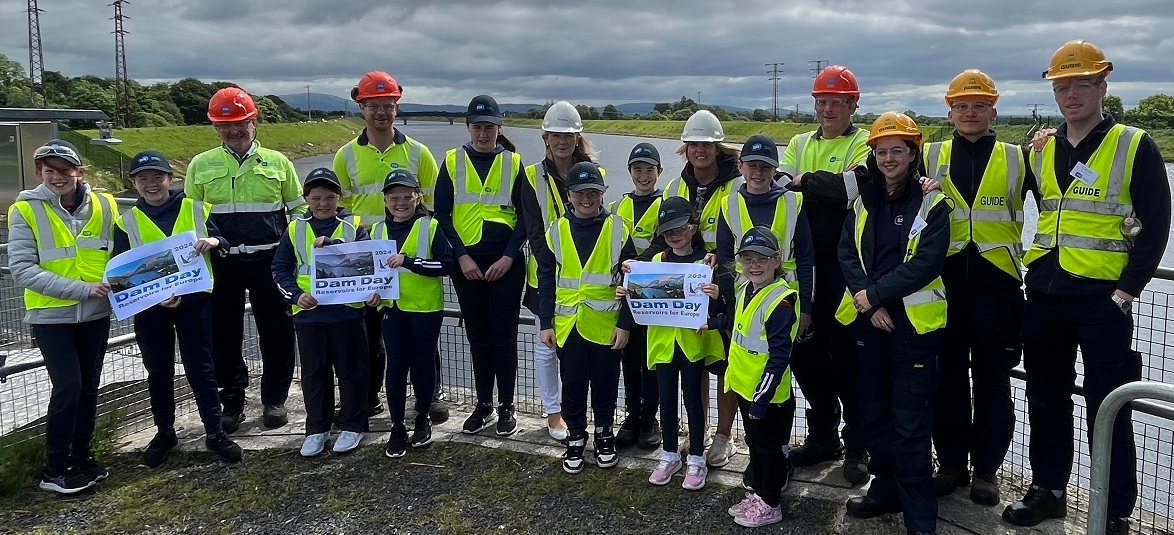Students from Killea National School in Templemore, Co Tipperary embarked on a fascinating journey as part of ESB Science Blast to discover the power hidden within their lunchboxes. Under the supervision of their teachers, these young scientists learned how to harness electricity from the most unexpected sources: fruits and vegetables.
The project involved the whole school working together to create batteries out of everyday produce. Fruits and vegetables contain electrolytes, substances that can conduct electricity when dissolved in water. When the metal electrodes are inserted into the produce, they react with the electrolytes to create a flow of electrons – electricity. This process mimics the chemical reaction that occurs in commercial batteries, albeit on a smaller scale.
School Visit
Brendan Shine, plant manager at our Ardnacrusha station in Co Clare, visited the Killea school ahead of the ESB Science Blast Limerick showcase event to see the students work, discuss renewable energy as well as ESB’s role in electrification.
As part of their scientific research, the students carefully inserted copper and zinc electrodes into potatoes, lemons, apples, bananas and even carrots. With wires and alligator clips, they connected their organic batteries to small LED lights, marvelling as they flickered to life.
“My favourite part was learning about the chemical reactions, and I liked making the circuits,” said one participating student.
The students recorded their findings, noted which produce yields the most voltage and pondered the factors that affect the electrical output leading to fascinating insights.
“The lemon generates the most electricity because it has the most juice,” said another student.
ESB Science Blast
The heart of ESB Science Blast lies in its hands-on approach. By actively experimenting with fruits and vegetables, the students moved beyond textbooks and engaged directly with scientific concepts. They learned that science isn’t just about memorising facts; it’s about curiosity, investigation, and discovery. As they assembled their organic batteries, they grasped the tangible connection between theory and practice.
“From watching our kids and doing the STEM lessons, they have shown huge progress in how they work as a team. It’s required collaboration. But also, how they have grown personally so they are showing questioning skills which is a huge thing that you want to see in a generation coming forward,’ said their teacher, Ms Murphy.
As their project concludes, the students of Killea National School have not only illuminated bulbs, but also ignited a passion for science within themselves that could one day lead to groundbreaking discoveries.
“I would love to be an engineer when I grow up because like I really loved seeing the final project when it's all put together and I know, oh my god I actually made that and it’s like a really good feeling," said one Killea school student.
To keep their interest sparked, ESB invited Killea National School for a visit to Ardnacrusha power station to get a glimpse of what a day working in STEM is like and to inspire them to think about how they, too, could contribute to a brighter, more sustainable future.
“ESB Science Blast is very important to us in ESB. The young minds, the young creativity, the critical analysis, critical thinking, planning, reflecting, all these key parts of ESB and how we go forward with our business”, said Brendan, in relation to the importance of ESB Science Blast for ESB.

